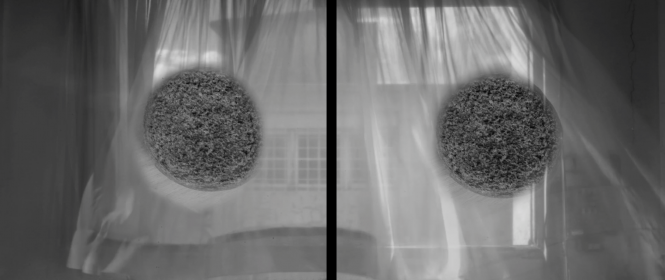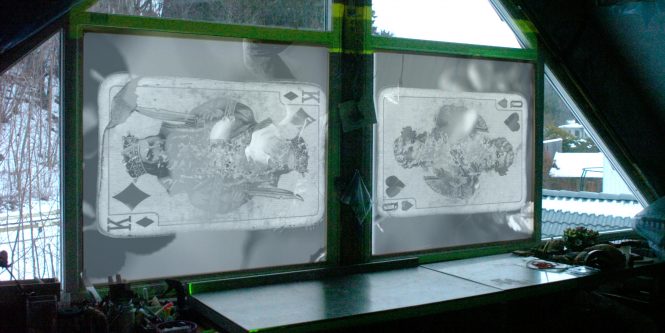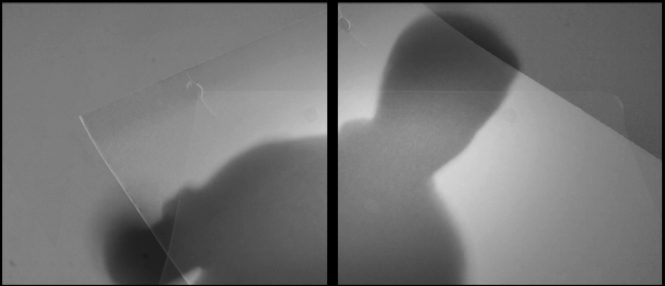A sequence of references is said to have spatial locality if things that are referenced close in time are also close in space (nearby sectors on a disk, etc.). A sequence is said to have temporal locality if accesses to the same thing are clustered in time
My studio windows face the track of the T-bane (Oslo public transport).
For about one hour in the early morning and in the early evening, monday to friday, 6. to 28. of January 2018, I projected a new animation-loop onto transparent screens in these windows.
The projections could be observed by travellers, possibly on their way to, or coming home from work, for approx. 3-4 seconds whilst shooting past my house … if they sat on the proper side in the tram-coach.
In an environment of, seemingly deterministic, or forseeable timing in the events, viewers had to make meaning out of a fragment of the information given in the projected loops.
The daily loops were all prepared and made from different sketches on my hard drives, on the previous day.
Each day’s loop was also uploaded to a RaspberryPi connected to a largish flatscreen monitor in the Bærum Kunstforening Gallery. There they would loop throughout the day, in the gallery’s opening hours.
At the Gallery the viewer was given freedom to align the narrative. Turn away, or come back to the project, themselves choosing the timing in the reading.
There were 15 daily loops in all.









